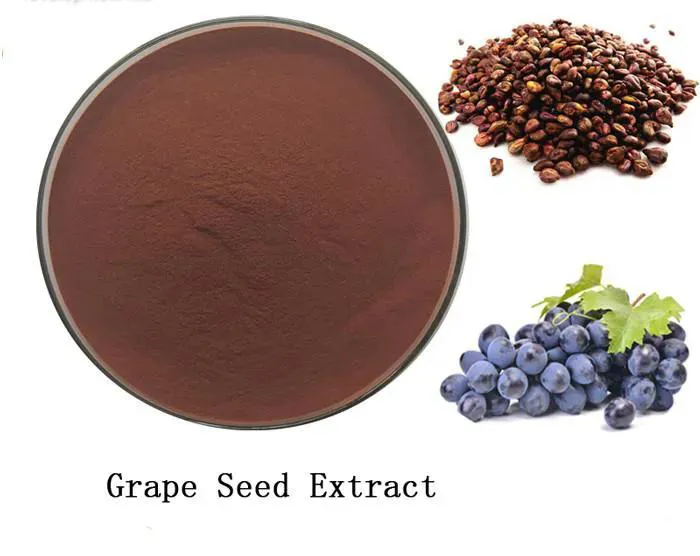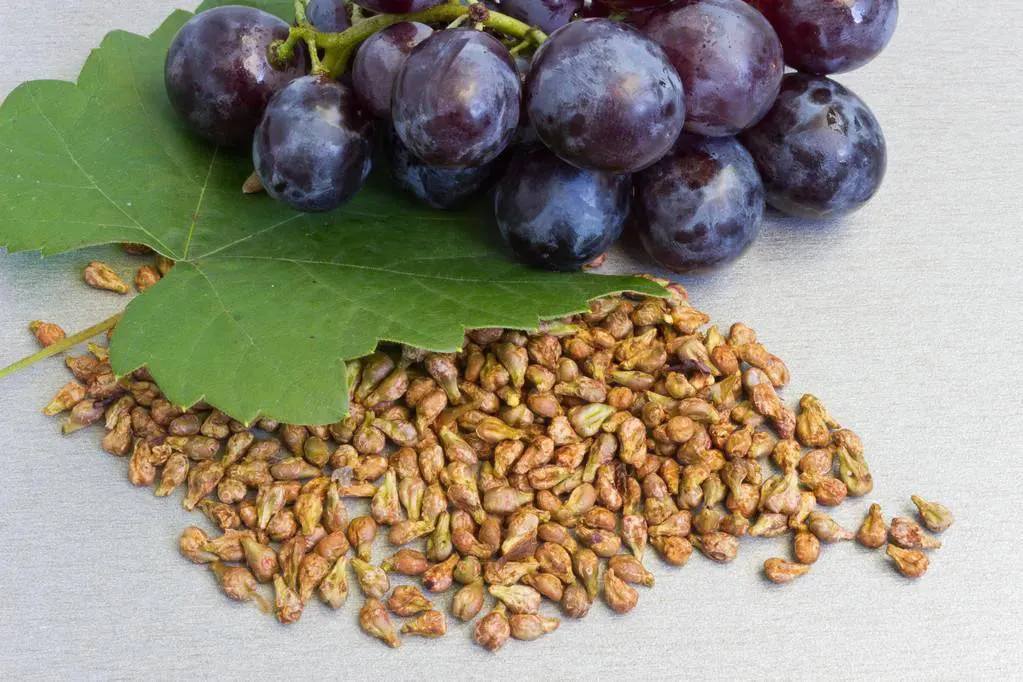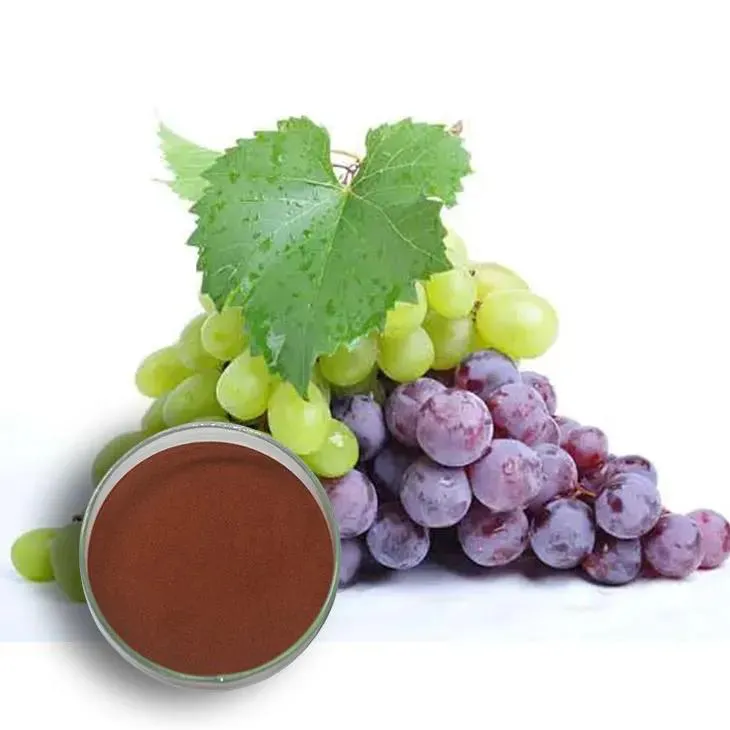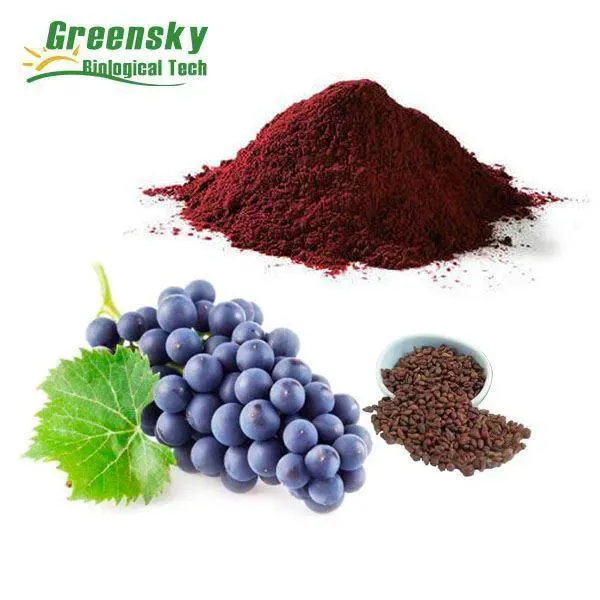- 0086-571-85302990
- sales@greenskybio.com
From Vine to Skin: How Grape Seed Extract Targets Moles
2024-08-19

Introduction
Moles are a common skin concern that can range from being merely cosmetic to potentially indicating more serious skin conditions. While traditional medical approaches exist for mole treatment, there has been a growing interest in natural alternatives. Grape Seed Extract, sourced directly from the vine, has emerged as a potential candidate in the realm of mole - related skin issues. This article delves into the various aspects of how Grape Seed Extract may interact with moles, exploring its chemical constituents, antioxidant and anti - inflammatory properties, and the implications for mole treatment.

The Source: Grape Vines
Grape Varieties and Seed Composition
Different grape varieties yield seeds with slightly different compositions. For example, red grapes are known to have a rich profile of bioactive compounds. The seeds of these grapes contain a variety of elements such as phenolic compounds, flavonoids, and oligomeric proanthocyanidins (OPCs). These components are not only important for the grape's own growth and protection but also hold potential benefits for human skin when extracted.Extraction Process
The extraction of Grape Seed Extract is a carefully controlled process. It typically involves crushing the seeds and then using solvents such as ethanol or water to isolate the desired compounds. This extraction method is crucial as it determines the purity and concentration of the active ingredients in the final extract. Improper extraction can lead to a product with reduced efficacy or even potential contaminants.
Chemical Constituents of Grape Seed Extract
Phenolic Compounds
Phenolic compounds are abundant in grape seed extract. These are secondary metabolites of plants and play a significant role in various biological activities. In the context of moles, phenolic compounds may have antioxidant and anti - inflammatory effects. Resveratrol, a well - known phenolic compound found in grapes, has been studied for its potential anti - cancer properties. While moles are not always cancerous, resveratrol's ability to modulate cell growth and differentiation could potentially be relevant in the context of mole management.Flavonoids
Flavonoids are another important group of compounds in grape seed extract. They are known for their antioxidant activity, which helps in neutralizing free radicals in the body. Free radicals can cause damage to cells, including those in moles. By reducing free radical damage, flavonoids may contribute to maintaining the health of the skin around moles and potentially influencing the mole itself. Some flavonoids also have anti - inflammatory properties, which can be beneficial in cases where moles are inflamed or irritated.Oligomeric Proanthocyanidins (OPCs)
OPCs are a type of flavonoid polymer that is highly concentrated in grape seed extract. They are known for their strong antioxidant capabilities, which are even more potent than some vitamins such as vitamin C and E. OPCs can penetrate the skin and may have the potential to protect the skin cells within and around moles from oxidative stress. This could be important in preventing the development of abnormal mole growth or in reducing the size or appearance of existing moles.
Antioxidant Properties of Grape Seed Extract
Free Radicals and Skin Health
Free radicals are highly reactive molecules that are produced in the body as a result of normal metabolic processes, as well as from external factors such as pollution and UV radiation. In the skin, free radicals can cause damage to DNA, proteins, and lipids. This damage can lead to premature aging, skin inflammation, and potentially the development of abnormal mole growth. Grape seed extract, with its rich antioxidant content, can scavenge these free radicals, thereby reducing the oxidative stress on the skin.How Grape Seed Extract Combats Oxidative Stress
The phenolic compounds, flavonoids, and OPCs in grape seed extract act as electron donors. When free radicals are present, these compounds donate an electron to the free radical, thereby neutralizing it and preventing it from causing further damage. This antioxidant activity is crucial for maintaining the overall health of the skin, including the area around moles. By reducing oxidative stress, grape seed extract may help in preventing the development of new moles or in the regression of existing moles.
Anti - inflammatory Qualities of Grape Seed Extract
Inflammation and Mole Development
Inflammation can play a role in the development and progression of moles. Chronic inflammation in the skin can lead to changes in cell growth and differentiation, which may contribute to the formation of abnormal moles. Additionally, inflamed moles may be more likely to undergo malignant transformation. Grape seed extract's anti - inflammatory properties can help in reducing this inflammation, thereby potentially reducing the risk of mole - related problems.Mechanisms of Anti - inflammation
The flavonoids and other compounds in grape seed extract can inhibit the production of inflammatory mediators such as cytokines and prostaglandins. By blocking the production of these mediators, the extract can reduce the inflammatory response in the skin. This can lead to a reduction in redness, swelling, and pain associated with inflamed moles. Moreover, by reducing inflammation, grape seed extract may also help in normalizing the cell growth and differentiation in moles, which could potentially lead to a more stable and less concerning mole appearance.Implications for Mole Treatment
Topical Application
One of the most common ways to use grape seed extract for mole - related issues is through topical application. A cream or ointment containing grape seed extract can be directly applied to the mole. The extract can then penetrate the skin and interact with the cells in and around the mole. However, it is important to note that not all topical products are created equal. The concentration of the active ingredients, the quality of the extract, and the formulation of the product can all affect its efficacy.Oral Supplementation
In addition to topical application, oral supplementation with grape seed extract is also an option. When taken orally, the extract is absorbed into the bloodstream and can then be distributed throughout the body, including to the skin. Oral supplementation may be beneficial for individuals with multiple moles or for those who want to address the underlying factors that may contribute to mole formation, such as oxidative stress and inflammation at a systemic level. However, as with any supplement, it is important to consult a healthcare provider before starting oral grape seed extract supplementation.Combination with Other Treatments
Grape seed extract can also be used in combination with other mole treatment methods. For example, it can be used in conjunction with laser treatment or surgical removal of moles. In these cases, the extract can help in reducing post - treatment inflammation and promoting faster healing. Additionally, it may also help in preventing the recurrence of moles in the long - term. However, further research is needed to fully understand the optimal combinations and protocols for using grape seed extract with other mole treatment methods.Limitations and Precautions
Allergic Reactions
Some individuals may be allergic to grape seed extract. Allergic reactions can range from mild skin rashes to more severe anaphylactic shock. Before using grape seed extract, either topically or orally, it is important to perform a patch test on a small area of skin. If any signs of allergy such as redness, itching, or swelling occur, the use of the extract should be discontinued immediately.Lack of Standardization
There is currently a lack of standardization in the production of grape seed extract products. Different manufacturers may use different extraction methods, grape varieties, and quality control measures. This can lead to significant variability in the composition and efficacy of the products. Consumers should be cautious when choosing a grape seed extract product and look for products from reputable manufacturers with clear labeling of the active ingredients and their concentrations.Not a Substitute for Medical Diagnosis
While grape seed extract may show potential in mole treatment, it is not a substitute for medical diagnosis. Moles can be an indication of melanoma or other skin cancers, and any suspicious moles should be evaluated by a dermatologist. Grape seed extract should be used as a complementary approach, in addition to regular medical check - ups, rather than as the sole method of mole management.Conclusion
Grape seed extract, with its rich chemical constituents, antioxidant, and anti - inflammatory properties, holds potential for mole - related skin issues. However, it is important to approach its use with caution, taking into account the limitations and precautions. Further research is also needed to fully understand its mechanisms of action and to develop more standardized and effective products. Overall, while it may not be a panacea for moles, grape seed extract can be a valuable addition to the natural approach to skin care in the context of mole management.
FAQ:
What are the main chemical constituents in grape seed extract relevant to mole treatment?
Grape seed extract contains various chemical constituents relevant to mole treatment. One of the key components is proanthocyanidins. These are powerful antioxidants that can help protect the skin cells from damage. Additionally, it may contain flavonoids which also contribute to its antioxidant and anti - inflammatory properties. These chemical constituents may potentially interact with the cells in moles, though more research is needed to fully understand the mechanisms.
How does the antioxidant quality of grape seed extract affect moles?
The antioxidant quality of grape seed extract can have a positive impact on moles. Antioxidants in the extract, like proanthocyanidins, help in neutralizing free radicals. Free radicals can cause damage to the skin cells, and in the context of moles, they may contribute to abnormal cell growth or changes. By reducing the oxidative stress caused by free radicals, the grape seed extract may potentially slow down or prevent any abnormal changes in moles.
Can grape seed extract completely remove moles?
Currently, there is no conclusive evidence that grape seed extract can completely remove moles. While it has properties such as antioxidant and anti - inflammatory effects that may have an impact on moles, more research is required. Moles are complex skin formations, and their removal typically involves medical procedures in some cases. Grape seed extract may be part of a holistic approach to skin health but should not be considered a sole solution for complete mole removal.
How is the anti - inflammatory property of grape seed extract beneficial for mole - related skin issues?
The anti - inflammatory property of grape seed extract is beneficial for mole - related skin issues in several ways. Inflammation around moles can sometimes be a sign of underlying problems or irritation. The anti - inflammatory agents in the extract can help reduce this inflammation. This may lead to a reduction in redness, swelling, or discomfort associated with moles. It can also potentially prevent any further inflammation - related changes in the moles, promoting overall skin health in the area.
Is it safe to use grape seed extract for mole - related skin issues?
Generally, grape seed extract is considered safe for topical use on the skin. However, when it comes to using it for mole - related skin issues, caution should be exercised. Some people may have allergic reactions to the extract. Also, since moles can be a sign of more serious skin conditions in some cases, it is advisable to consult a dermatologist before using grape seed extract for mole - related concerns. It should not be used as a substitute for proper medical evaluation.
Related literature
- The Role of Grape Seed Extract in Skin Health"
- "Antioxidants in Grape Seed Extract and Their Impact on Skin Conditions"
- "Natural Approaches to Mole Management: Grape Seed Extract in Perspective"
- ▶ Hesperidin
- ▶ citrus bioflavonoids
- ▶ plant extract
- ▶ lycopene
- ▶ Diosmin
- ▶ Grape seed extract
- ▶ Sea buckthorn Juice Powder
- ▶ Beetroot powder
- ▶ Hops Extract
- ▶ Artichoke Extract
- ▶ Reishi mushroom extract
- ▶ Astaxanthin
- ▶ Green Tea Extract
- ▶ Curcumin Extract
- ▶ Horse Chestnut Extract
- ▶ Other Problems
- ▶ Boswellia Serrata Extract
- ▶ Resveratrol Extract
- ▶ Marigold Extract
- ▶ Grape Leaf Extract
- ▶ blog3
-
Black Rice Extract
2024-08-19
-
Oyster Mushroom Extract Powder
2024-08-19
-
Centella Asiatica Extract
2024-08-19
-
Oat Straw Extract Powder
2024-08-19
-
Acerola Extract
2024-08-19
-
Mangosteen extract powder
2024-08-19
-
Curcuma Longa Extract
2024-08-19
-
Saw Palmetto Extract
2024-08-19
-
Licorice Root Extract Powder
2024-08-19
-
Marigold Extract
2024-08-19





















